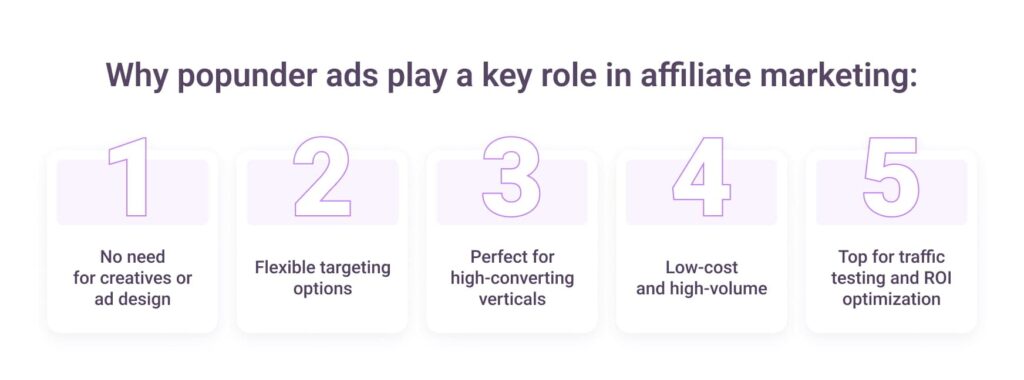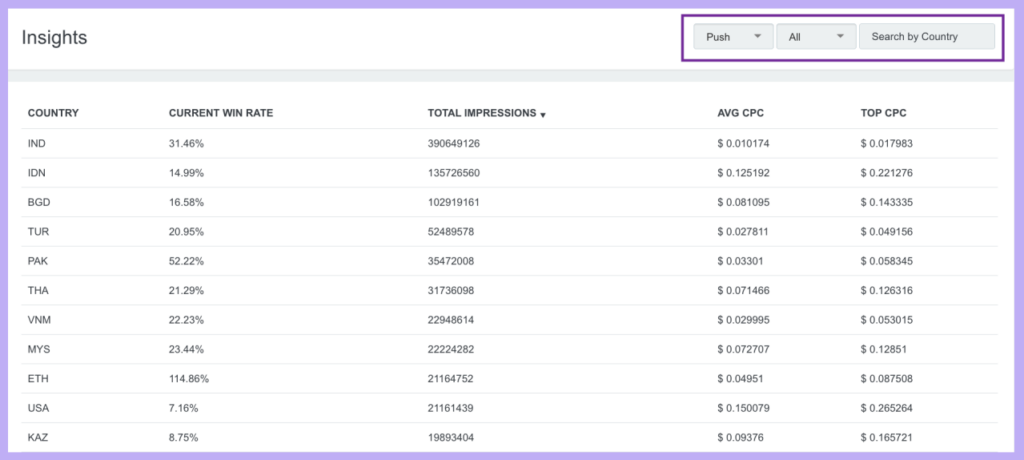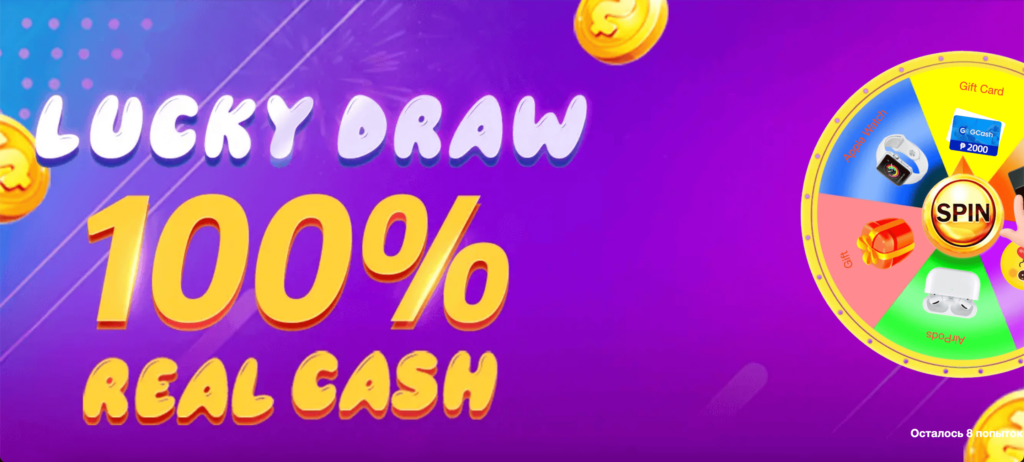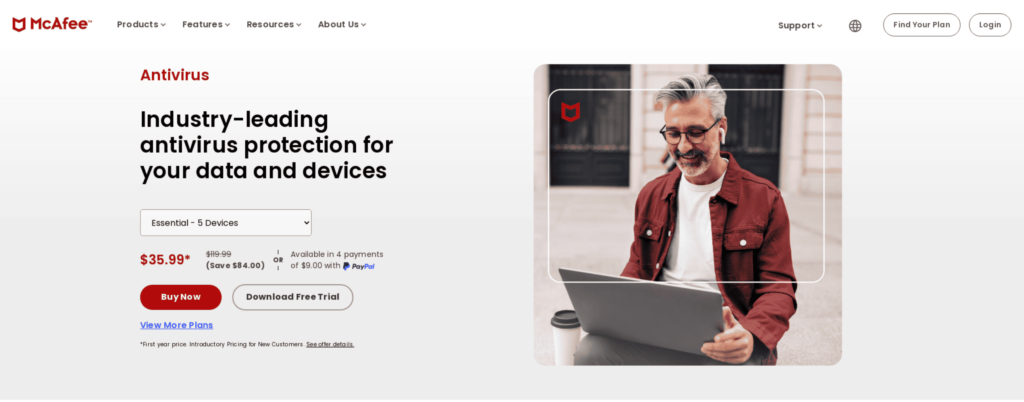Popunder ads are back in 2025 — and it’s not by accident. With ad fatigue hitting display and native formats, advertisers are turning to popunders because they work. They’re cost-effective, high-volume and perfect for performance-driven affiliate campaigns. Whether you’re promoting gambling, betting, finance or utilities, popunder advertising delivers the kind of results that get noticed.
At ROIads, we specialize in push and popunder traffic, helping affiliate marketers scale campaigns across top geos. Every day we serve over 900 million impressions and we know exactly how to make pop traffic convert.
This guide was created by our team to help both beginners and experienced media buyers master the popunder format. We’ll cover:
- what popunder ads are and how they work,
- why they’re one of the most effective ad types in affiliate marketing,
- which verticals and devices work best,
- how to optimize and scale your campaigns,
- and what strategies actually drive conversions and profit in 2025.
Whether you’re just testing the waters or looking to double down on pop traffic, this complete guide will walk you through everything you need to know — backed by real data, platform insights and proven strategies.

Let’s get started!
What Is a Popunders and How It Works
Let’s start with the basics: what is a popunder ad?
A popunder ad is a type of advertising format that opens a new browser window or tab behind the current one when a user clicks or interacts with a website. Unlike traditional popups that appear in front and interrupt the customer experience, popunders stay hidden until the main tab is closed or minimized — giving your offer a second chance to get noticed.

In affiliate marketing, this format is especially popular for its aggressive yet effective approach, delivering massive traffic volumes at a relatively low cost.
✅ Important note: Terms like pop, popunder ad and popunder are often used interchangeably — they all refer to the same ad format. So if someone says “run pops”, they’re most likely talking about popunder traffic.
If you want to understand how pop ads work from every angle — including formats, setup, and performance tips — don’t miss our full guide on Pop-Up Ads. It explains the difference between pop and popunder formats, when to use each, and how to make them convert better.
How Does a Pop-under Ad Work?
Here’s a simplified breakdown of the mechanics behind a popunder ad:
- A user visits a website that monetizes traffic using popunder ads.
- Upon interaction (usually a click or scroll), a script triggers a new window or tab to open behind the main one.
- This new window loads a landing page — usually from an affiliate campaign or offer.
- Once the user closes or minimizes the main tab, the ad becomes visible and has a chance to convert.
This makes popunder traffic highly viewable but non-intrusive — a sweet spot for many performance marketers.
Popunder Ads Meaning in Affiliate Campaigns
So, what do popunders mean for affiliate marketers? In short: a fast and scalable way to drive high volumes of affordable traffic directly to your offer — with fewer production costs and more control over testing and optimization.
Popunder ads continue to be a driving force behind affiliate marketing campaigns for several reasons.

- No need for creatives or ad design — popunder traffic sends users straight to your landing page or pre-landing, allowing you to launch campaigns quickly and focus on testing offers rather than visuals.
- Perfect for high-converting niches like gambling, betting, dating, finance, sweepstakes, and utilities, especially in geos where push and pop formats dominate.
- Flexible targeting options, including geo, device type, OS, browser, connection type, and more other — helping advertisers reach the right audience with precision.
- Low-cost and high-volume — popunder traffic offers some of the cheapest CPM rates in the industry, making it an ideal format for scaling.
- Excellent for traffic testing and ROI optimization — by combining detailed statistics with tools like Micro bidding and whitelists/blacklists, affiliates can quickly filter out underperforming sources and scale the ones that convert best.
Popunders offer a balance of volume, control and profitability. That’s why they’re one of the most effective ad formats for performance-driven affiliate marketers.
Advantages of Popunder Ads
In 2025, popunder advertising continues to be a powerful weapon in an affiliate marketer’s toolbox. While many advertisers focus on social or native channels, savvy media buyers know that cheap popunder ads deliver a much better ROI — especially when combined with smart targeting and proper frequency capping.
Ready to dive deeper? In the next chapter, we’ll explore why popunder ads are booming again in 2025, and why more advertisers are turning to this format to scale their affiliate campaigns.
Advertise with Popunder Ads in 2025: Why It Still Works
In a world where ad costs are skyrocketing, banner blindness is on the rise and mainstream platforms are getting stricter about moderation, popunder ads have emerged as one of the most efficient and stable sources of traffic for affiliate campaigns.
The format has been around for years, but in 2025 it’s experiencing a major revival. Why? Because it still delivers on the three things every affiliate cares about: volume, cost-efficiency, and conversions.

Here’s why advertisers and affiliate marketers are investing more into popunder advertising this year:
1. Popunder Ads Are Cost-Effective:
Compared to formats like native or social, popunder traffic is significantly cheaper. CPMs often start at $0.5, so you can test offers with minimal risk and scale only what works. For affiliates working with Tier 2 and Tier 3 geos, that means access to millions of impressions at a fraction of the price.
2. They Deliver Massive Reach:
Popunder ad networks, like ROIads, offer global coverage with billions of impressions available daily. Whether you’re running a campaign in Brazil, India or Germany, there’s no shortage of inventory — especially for gambling, utilities and dating.
3. Suitable for Challenging or Niche Offers:
If you’re promoting niches that often face restrictions on social platforms — such as gambling, betting or sweepstakes — popunder ads give you a workaround. You don’t need to worry about rejected creatives or blocked accounts. Just set up your link, choose your targeting, and go live.
4. Popunders Are Creative-Free:
Unlike formats that rely on banners, headlines or video assets, popunder advertising doesn’t need any of those things. That means less time and budget spent on ad creatives — especially for solo affiliates and small teams. What you need is a solid landing page or pre-landing. The rest is just traffic flow and optimization.
5. High Performance With the Right Strategy:
With the right targeting and frequency settings, popunder campaigns can deliver strong conversion rates. That’s especially true on desktop devices or in geos with less competition. Add features like source-level optimization or Micro bidding to the mix, and you can really get the most out of your ROI.
6. Reliable Testing Ground for Offers:
Need to validate a new offer or landing page? You can launch a campaign in minutes, track performance in real-time and make data-driven decisions without burning your budget.
The 2025 Trend: Back to Basics
As platforms like Facebook and Google become more restrictive, experienced media buyers are shifting back to the formats that work. Popunders are leading the pack. With minimal setup, no creative costs and a stable traffic supply, this format is a solid foundation for scaling affiliate campaigns.
Next up, we’ll walk you through why ROIads is one of the top popunder ad networks this year and how it helps advertisers launch and scale faster.
Quick Overview of ROIads Advertising Network: Popunder Traffic Source That Converts
Choosing the right popunder ad network is crucial if you’re serious about running popunder ad campaigns in 2025. You want a traffic source that offers both scale and precision. That’s exactly what ROIads delivers.

Why ROIads for Pop Traffic?
ROIads is a self-service advertising platform focused exclusively on push and popunder traffic, giving advertisers high-quality, high-volume inventory with full control over targeting and optimization.
Here’s what makes ROIads stand out for affiliate marketers:
- Massive Reach: Over 900 million impressions per day, with strong coverage across Tier 1, Tier 2, and Tier 3 geos.
- Global Geo Targeting: Run campaigns in top-performing countries like Brazil, Indonesia, USA, Germany, and India.
- Powerful Targeting Options: Target by geo (city/region), OS, browser, device, browser language, connection type, carrier targeting, ISP targeting, IP targeting, frequency capping, schedule.
- Affordable Entry Point: Minimum deposit of $250 to start.
- Micro Bidding: Fine-tune bids for each source to control spend and focus on top performers.
- AI Bidding Technology: Automatically optimizes traffic sources in real time to achieve the best ROI.
- CPA Goal: Keeps campaigns within your target CPA by auto-adjusting bids and traffic distribution.
- Optimization Rules: Automate optimization with custom rules — pause weak creatives, blacklist low-performing sources, and manage budgets without manual work.
- Expert Support: Advertisers with $500+ deposits get a personal manager to help with strategy, creatives, and scaling.
- Fast Postback Integration: Compatible with major trackers like BeMob, Keitaro, RedTrack, and PeerClick.
Thanks to these features, ROIads makes launching, optimizing and scaling popunder campaigns faster and easier. Whether you’re running your first test or managing large-scale affiliate funnels, you can rely on ROIads to get the job done.
After registration, the dashboard provides insights for 150+ geos, including available traffic volumes, average and top CPC/CPM rates, win rate statistics, and segmentation by format as well as traffic type (desktop or mobile).

Next up, we’ll cover top-performing geos for popunder ads on ROIads, based on fresh data and traffic trends.
Top Geos for Popunder Ads Traffic on ROIads
Choosing the right geo can make or break your popunder ad campaign. While the format works globally, some countries show consistently higher click-through and conversion rates — especially when combined with the right vertical and device targeting.
At ROIads, we analyzed thousands of campaigns to identify the top-performing geos for popunder ads based on volume, conversion rates, and affiliate profitability.

Here are the countries where popunder traffic is currently delivering the best results with impressions and average CPM:
| Country | Why It Works | Impressions per day | Average CPM |
| Indonesia | Huge mobile traffic, cheap CPMs, strong CR in gambling & dating | 597289 | $2.1 |
| USA | High-quality desktop traffic, great for software and finance offers | 3691111 | $3.4 |
| South Korea | Engaged mobile users, works well for betting and apps | 49546 | $1.7 |
| Vietnam | Good performance on utilities, e-commerce, and sweepstakes | 193608 | $1.8 |
| Pakistan | Low-cost traffic, especially effective for Android offers | 74546 | $2.8 |
| Thailand | Popular for dating and gambling on both mobile and desktop | 170618 | $1.8 |
These geos are not only traffic-rich but also optimized for popunder advertising due to customer behavior patterns and mobile/browser infrastructure. Whether you’re launching a test campaign or scaling your top offers, these countries are a smart starting point.
💡Tip: For mobile popunder ads, focus on Indonesia, Vietnam, and Pakistan. For desktop campaigns, the USA and South Korea provide higher conversion quality.
In the next section, we’ll break down the top niches for popunder ads on ROIads — including which niches perform best by device type.
Best Verticals for Popunder Ads at ROIads
Not every offer works equally well with every traffic type — and popunder ads are no exception. To get the best results, affiliates need to align the vertical with the device type, targeting, and user behavior in a specific geo.
At ROIads, we’ve identified the top-performing niches for popunder advertising based on live campaign data. Below, we break them down by mobile and desktop — so you can build campaigns with confidence and clarity.
Top Verticals on Popunder Ads: Mobile Traffic
Mobile popunder ads are fast, scalable and perfect for Tier 2–3 geos. Users are often more impulsive, making them ideal for niches with low entry barriers or high entertainment value.

| Vertical | Why It Works Well |
| Gambling | Engaging, high-payout, with strong CR in APAC geos |
| Betting | Similar to gambling, often seasonal (sports-driven) |
| E-commerce | Converts well with discount offers and aggressive pricing |
| Dating | Works especially well with broad targeting and smartlinks |
These niches thrive on mobile because of shorter decision cycles and the sheer volume of available traffic. If you’re running a popunder campaign on Android-heavy geos like Indonesia or Pakistan, mobile is your go-to.
Top Verticals on Popunder Ads: Desktop Traffic
Desktop users tend to be more deliberate and are often more likely to convert on higher-complexity flows like registration + deposit or app download. For this reason, desktop pop traffic remains highly profitable.

| Vertical | Why It Works Well |
| Dating | High engagement and longer user sessions |
| Gambling | Better visibility for large landing pages |
| Media / Blogs | Great for monetization with ads or content subscriptions |
| Software & Apps | Ideal for installs, especially antivirus or system tools |
In the next section, we’ll look at real-life use cases where popunder ads shine and discuss the campaigns that typically generate the highest ROI.
Top Use Cases for Popunder Ads
Popunder ads are super flexible — that’s why they’ve been a staple in the affiliate marketing arsenal for over a decade. But to really get the most out of them, you need to know when and how to use them.
Here are some of the most common and working use cases where popunder traffic delivers.
1. Aggressive Launches (Gambling, Betting, Dating)
If you’re running niches that are restricted on other ad platforms (like Meta or Google Ads), popunder advertising is your go-to. No creatives or pre-approvals needed — just a landing page and the right targeting.
Example:
A media buyer promoting a Tier 3 gambling offer there launched a mobile-targeted popunder campaign with a pre-landing in English. That campaign saw strong conversion rates at minimal costs — especially when paired with ROIads’ Micro bidding feature.
2. Offer Testing With Broad Traffic
Popunder ads are perfect for testing multiple offers quickly. You don’t need to invest in creatives to rotate smartlinks, split test landing pages or try different offers. That flexibility is one of the reasons why affiliates love popunders.
Example:
An affiliate testing dating versus e-commerce offers in Vietnam launched a campaign targeting Android mobile traffic. After just two days, dating showed higher click-through rates and conversion rates. So they paused e-commerce and scaled up dating with a higher bid.
3. High-Payout Funnels on Desktop
Popunder ads also work well for high-payout funnels on desktop traffic. That’s because potential customers are more likely to complete multiple steps or interact with complex landing pages on the desktop. You can isolate and optimize this traffic source using popunders.
Example:
A team promoting antivirus installs in the US set up a desktop-only pop campaign with a frequency cap of one view per user per day. They used ROIads’ source-level stats to blacklist low-performing publishers and double down on high-ROI placements.
4. Smartlink Traffic Monetization
Running traffic to smartlinks? Popunders allow you to send users to a monetized flow without the need to match creatives to offers. This is especially effective in broad or low-quality geos where one-click flows convert best.
Example:
A solo affiliate ran a broad Pakistan campaign on popunder traffic with a dating smartlink. ROIads optimization tools helped filter out poor-performing sources automatically, improving the EPC within 48 hours.
5. Supplemental Traffic for Scaling
Popunders can act as a backup or scaling channel even if you’re running push, native or social ads. They’re perfect for warm-up, retargeting via smart prelandings or adding affordable volume to your funnel.
When to Avoid Popunders?
- Offers requiring long attention spans or brand trust (e.g., luxury products, subscription SaaS)
- Countries with strict browser restrictions (use device whitelisting)
- If your offer doesn’t support fast redirects or struggles with bot filtering (always test first)
Pros and Cons of Popunder Ads
Like any traffic format, popunder advertising comes with its own set of strengths and weaknesses. While it’s known for affordability and massive reach, it’s not the right choice for every campaign or offer type. To help you make an informed decision, here’s a breakdown of the main benefits and limitations of popunder ads.
To help you make an informed decision, here’s a breakdown of the main benefits and limitations of popunder ads — based on campaign data and affiliate experience.
| Pros of Popunder Ads | Cons of Popunder Ads |
| High traffic volumes — great for testing and scaling | Can be seen as intrusive by some users if frequency capping is off |
| Low CPM rates — cheaper than push, native, or social traffic | High bounce rates if landing page doesn’t engage quickly |
| No creatives required — direct-to-offer or pre-landing | Requires optimization: not all sources convert equally |
| Works with aggressive niches — no bans or ad rejections | May trigger ad blockers on certain browsers |
| Easy to launch — minimal setup time | Not ideal for branding or high-trust funnels |
| Strong performance on both mobile and desktop | Less effective for long-form content or slow-loading websites |
Summary: Is This Format Right for You?
If you’re running affiliate campaigns focused on fast conversions, Tier 2-3 geos or offers that don’t require heavy branding — popunder ads offer one of the best ways to earn high ROI at scale.
But to get the most from this format, you’ll need:
- well-optimized landing pages,
- proper targeting by device and geo,
- and a strategy for source filtering and scaling.
Up next: we’ll compare mobile vs desktop traffic for popunder campaigns and which one performs better depending on your offer.
Mobile vs Desktop Popunder Advertising: Which One Converts Better?
When planning your popunder ad campaign, one of the biggest decisions you’ll make is which device to focus on: mobile or desktop. Both have their pros — and your choice should depend on the offer, target geo, and user behavior.
Let’s compare them side by side to help you build a better campaign strategy.

Mobile Popunder Traffic
- Cheaper (lower CPMs)
- Huge volume in Tier 2 and Tier 3 countries
- Good for simple offers: dating, gambling, sweepstakes
- Fast user sessions, impulsive clicks
- Best for one-click flows, smartlinks, broad targeting
Best use case:
Running gambling or dating offers in Indonesia or Vietnam with a mobile-optimized pre-landing.
Desktop Popunder Traffic
- Higher quality traffic with longer sessions
- Better for complex flows: installs, finance, utilities
- Works well with detailed landing pages or comparison sites
- Higher conversion rates in Tier 1 geos (e.g., USA, Germany)
- Less volume than mobile, but better CR and EPC
Best use case:
Promoting an antivirus offer in the US using desktop popunder traffic with post-install monetization.
Comparison Table: Mobile vs Desktop Popunder Ads
| Feature | Mobile Traffic | Desktop Traffic |
| CPM | Lower | Moderate to high |
| Traffic Volume | Very high | Moderate |
| Conversion Quality | Medium | High |
| Best Geos | ID, PK, VN, TH | US, DE, KR, BR |
| Top Verticals | Dating, Gambling, Sweeps | Software, Finance, Media |
| User Behavior | Fast clicks, short attention | Longer sessions, higher intent |
| Offer Complexity | One-click, simple flows | Multi-step, more detailed |
Which Should You Choose?
- If you’re running offers with simple flows in high-volume geos → Start with mobile
- If you’re promoting products that require focus and time → Go for desktop
- Want to test both? Split campaigns by device, track results separately, and use Micro bidding for precision controlIn short,
In short, mobile brings volume, desktop brings stability — and successful affiliates use both depending on the campaign stage.
7 Steps: How to Run a Successful Pop Ad Campaign
Running a profitable popunder ad campaign isn’t just about throwing traffic and hoping for conversions. To make this format work for you, especially in affiliate marketing, you need a clear strategy, structured setup and a solid optimization flow. Let’s break it down step by step.

Step 1: Define Your Goal and Offer Type
Before you touch any settings, you need to know what you’re trying to achieve. Are you looking for registrations, app installs, deposits or leads? The offer type will guide your entire campaign strategy — including your targeting, landing page design and even traffic source. Popunder ads are good for aggressive niches like gambling, betting, dating, sweepstakes and utilities. These types of offers benefit from the large volume and direct click behavior of popunder traffic, especially when you don’t rely on creatives.
Step 2: Choose the Right Popunder Ad Network
Not all ad networks are created equal when it comes to popunder ads. You need a platform that offers transparency, high traffic quality and strong optimization tools. ROIads is a great choice for affiliate marketers working with popunder ads — it has over 900 million daily impressions, precise targeting options and support for performance optimization with features like Micro bidding. This is crucial when you’re filtering traffic sources and scaling what converts.
Step 3: Segment by Device and Geo
One of the most important factors in a popunder campaign is proper segmentation. You should never mix mobile and desktop traffic in the same campaign — user behavior, conversion flow and CPM rates vary drastically by device. Same goes for geos. For example mobile popunder ads perform well in countries like Indonesia or Pakistan due to volume and affordability, while desktop traffic from USA or South Korea often brings higher conversion quality. Launch separate campaigns per device and geo to isolate what works and optimize faster.
Step 4: Set Budget, Bids, and Frequency Caps
Once your segmentation is clear, you’ll need to define your budget and bidding strategy. Start small to collect enough data — even $30 to $50 per day is enough to test initial traffic. For popunder ads CPM bids can start as low as $0.50 but recommended bid depends on your target geo, vertical and device type. Frequency capping is also important. To avoid overwhelming users or wasting impressions, set your cap to one-two clicks per user per 24 hours. This way your landing page will stay effective without creating friction for the user.
Step 5: Track Conversions with Postback URL
If you’re serious about affiliate marketing, you need proper conversion tracking in place — and that means setting up a postback URL. S2S (server-to-server) postback tracking ensures that your conversions are recorded accurately and linked to specific traffic sources. This not only gives you better visibility into which sub-sources are converting but also unlocks advanced features like Micro bidding. ROIads integrates easily with top trackers like BeMob, Keitaro, RedTrack and PeerClick so you can track every click, impression and conversion in real time.
Step 6: Monitor and Optimize
After 1-2 days of traffic, it’s time to check your campaign stats. See which devices, browsers, OS versions and source IDs are converting. Cut the losers, adjust bids where needed and don’t hesitate to pause entire sources if EPC is below average. With popunder traffic optimization is continuous and the faster you react to data the better your ROI will be. ROIads makes this easy with source-level reporting — so you can adjust bids on the fly without relaunching your campaign.
Step 7: Scale What Works
Once you find a winning geo, device and source, it’s time to scale. Increase your budget gradually and duplicate the campaign if needed to test new browsers, OS versions or creatives (if you’re using pre-landing). Many successful affiliates running popunder campaigns build custom whitelists and blacklists over time — trimming waste and amplifying performance. And remember: what works in one geo or niche might work in another. Use your data to expand horizontally and launch similar setups in new regions.
With a solid campaign structure, tracking and ongoing optimization, popunder ads can be one of the most reliable traffic sources in your affiliate strategy. Next up: we’ll look at popunder ads examples — landing pages and content — including tips to improve conversions without creatives.
Popunder Ads Examples: The Best Copy and Landing Pages
One of the biggest advantages of popunder ads is that they don’t require ad creatives in the traditional sense — no banners, no headlines, no native-style teasers. The click already happened, and your landing page is doing the heavy lifting.
This makes the role of the landing page (or pre-landing page) even more important. Since popunder traffic lands directly on your site, your page needs to grab attention instantly and guide the user towards conversion with minimal friction.
Let’s take a look at the most common content strategies across popular thematics — and what they tell us about high-performing popunder ads copy and landing page design.
Gambling
In this type of ad, most landing pages aim to create excitement and urgency. Bold colors, game-related visuals and large bonus call-to-actions dominate. The flow is often broken down into steps — Register, Deposit, Get Bonus — to make the path to conversion feel easy and rewarding. Text is minimal and visual hierarchy is strong. Conversion is emotionally driven.

Betting
Betting pre-landings use similar design logic but add more credibility through elements like sports gear, app visuals or recognizable icons. Offers like “150% bonus” are front and center, paired with action buttons like “Get Bonus.” The structure pushes quick action, while the design gives a sense of trust. Messaging is short, direct and profit oriented.

Finance
Finance, trading and crypto landings go for a “breakthrough” angle. Big numbers, urgent headlines like “Bitcoin is making people rich” and a simple form above the fold. Copy relies on FOMO and big earnings — which works well in popunder campaigns because of the surprise of the format.

Sweepstakes
Sweepstake landings combine bright colors, animated elements and interactive CTAs like “Spin the Wheel.” The visual impression is more playful and gamified. Popunder traffic pairs well with this approach — users didn’t expect to see the page but are quickly drawn in by the promise of easy rewards. No need for long form text here: clarity and motion drives clicks.

Antivirus and Utilities
When it comes to antivirus and utilities, trust, clarity and structure are what it’s all about. That means direct, benefit-oriented text — like “Protect your data and devices.” A clean design and those brand elements really build credibility. That approach shines on desktop popunder traffic, where users are more likely to read and engage with what you have to say. Clear pricing or “Download Free Trial” buttons get users moving down the funnel fast.

Dating
Dating landing pages are all about emotion, identity and simplicity. You see couples in the images, short phrases like “Meet Elite Singles” and one clear CTA button. The copy is aspirational rather than persuasive. On mobile, where popunder ads perform strongly for dating, those landing pages are built to load fast and connect immediately.

Final Tips for Landing Pages in Popunder Campaigns
- Get to the point quickly — users didn’t expect to land here
- Use visual hierarchy to guide clicks (big buttons, simple layouts)
- Match the message to the niche — emotion for dating, urgency for crypto, structure for antivirus
- Localize if possible — native language boosts CR significantly
- Don’t overload with text — use strong copy, not long paragraphs
Want more examples? We’ve got you covered:
👉 Best Pre-Landing Page Examples for Leading Verticals
👉 Popunder Ads Examples: How Top Landings Look in 2025
These guides show you exactly what works — across gambling, betting, dating, finance, utilities, and more.
Popunder Ads in Affiliate Marketing: Profitability and Trends
Popunder ads in affiliate marketing have remained a steady performer, especially for those who know how to work with raw, high-volume traffic. Despite the rise of push notifications, native ads and influencer campaigns, popunders continue to deliver strong margins and scalable performance across a wide range of offers and thematics.
Let’s explore why this format is still profitable in 2025, and how smart affiliates are using it to earn consistently.
Why Popunder Traffic Still Work
What makes popunder traffic so simple, and therefore so effective: there’s no need for creatives, approvals or complicated funnels. Just a solid offer, a fast-loading landing page and the right targeting. That makes it one of the fastest formats to test, optimize and scale. And it’s incredibly cost-effective, with CPM rates far below most push or native platforms.
Because users don’t actively engage with an ad, but are passively redirected to a landing page, popunder ads bypass “banner blindness” and are less affected by creative fatigue. This opens the door for sustained performance over time, especially when combined with frequency capping and whitelist optimization.
Vertical Match = Higher Profit
Not every offer is a good fit for popunder campaigns, but when it clicks, the results are hard to beat.
- Gambling and betting in Tier 2–3 geos
- Antivirus and utilities on desktop devices
- Sweepstakes with mobile smartlink flows
- Dating offers with pre-landings and simple CTAs
- Finance/crypto on fast, visually-driven landings
These niches perform well because they align with user behavior on popunder traffic — quick impressions, impulsive decisions and low-friction flows.
How Affiliates Maximize Earnings With Popunder Ads
Smart affiliates follow a few consistent patterns:
- Split test offers quickly and cut losing flows early
- Segment campaigns by device and geo from the start
- Use source-level data to whitelist top placements
- Combine popunders with push traffic to retarget or scale
It’s not about luck — it’s about strategy and repetition. Once you find your formula, you can scale horizontally to new countries or similar offers and keep earning.
Trend Forecast: Popunder Growth in 2025
With many mainstream ad platforms getting stricter and more expensive, more affiliates are going back to basics — and popunder ads are benefiting from that. The format is perfect for solo media buyers, teams with limited budgets or those promoting greyhat and high-payout offers that can’t run elsewhere.
With AI bidding tools, Micro bidding and improved postback tracking, popunder advertising is entering a new phase: still effective, but now smarter and more data-driven.
FAQ: What People Also Ask About Popunder Ads
❓ What are popunder ads and how do they work?
Popunder ads open a new browser window behind the current one, so users only see them after closing or minimizing the active tab. They don’t interrupt the browsing experience right away.
❓ Are popunders effective for conversions?
Yes — popunders are good because they’re not intrusive, bypass many ad blockers and still get attention when users are done with what they’re doing.
❓ What’s the difference between pop-up and popunder?
A pop-up opens a window above the content, right away. A popunder opens behind the tab, so it shows up later. The latter is seen as less intrusive and has almost the same conversion potential as the former.
Conclusion: Should You Try Popunder Campaign in 2025?
If you’re looking for a traffic source that’s cheap, scalable and works for challenging niches — then popunder advertising is definitely worth testing in 2025.
Whether you’re an experienced media buyer or just getting into affiliate marketing, this format is a rare combination of simplicity and power. You don’t need creatives, you’re not limited by platform policies and you get access to masses of untapped traffic at some of the lowest CPMs in the market.
Throughout this guide we’ve shown how popunder ads can:
- Convert for gambling, dating, betting, finance, antivirus and sweepstakes
- Work on mobile and desktop traffic
- Allow fast testing, clean optimization and structured scaling
- Help affiliates earn consistently with the right targeting and landing pages
Thanks to smart tools like Micro bidding, postback tracking and device-level segmentation, popunders are more efficient than ever — not just cheap but strategically powerful.
Ready to put these into action? Launch your next campaign with ROIads — a trusted popunder ad network that combines traffic quality, flexibility and hands-on support.















